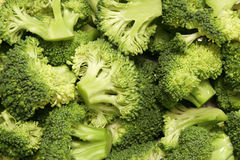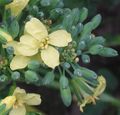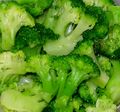Broccoli
LATINNAME {{{latin_name}}}
|
'
| ||||||||||||||||||||||||||||||||||||||||
|---|---|---|---|---|---|---|---|---|---|---|---|---|---|---|---|---|---|---|---|---|---|---|---|---|---|---|---|---|---|---|---|---|---|---|---|---|---|---|---|---|---|

|
|
| |||||||||||||||||||||||||||||||||||||||
| |||||||||||||||||||||||||||||||||||||||||
| Standard Cyclopedia of Horticulture |
|---|
|
Broccoli, which is a long-season cauliflower, is in all respects like cauliflower except that its vegetative parts are somewhat coarser, the heads somewhat smaller, and it does not form an edible curd early in its life as does cauliflower. Broccoli is cultivated only in climates having a mild winter, when it can be planted the summer before and carried through the winter to form heads early the following spring. It is a popular plant in all parts of France and particularly in England. It is undoubtedly the parent type of the cauliflower, the cultivated varieties of cauliflower being short-season forms. For best results, the seed should be sown at the same time as that of autumn cabbage and the plants transplanted to the field about the same time, so that they will make their vegetative growth during the late summer and autumn. Where winters are mild, the plants can be left in the open, but in more rigorous climates at the approach of cold weather, a small number of plants can be lifted with earth adhering to the roots, stored in a suitable root-cellar, and the following spring transferred to the open to form heads. L. C. Cobbett.CH
|
Cultivation
- Do you have cultivation info on this plant? Edit this section!
Propagation
- Do you have propagation info on this plant? Edit this section!
Pests and diseases
- Do you have pest and disease info on this plant? Edit this section!
Species
Gallery
-
Test plot-grown broccoli
-
Extreme close-up of broccoli florets.
-
Broccoli flowers.
-
Two broccoli heads.
-
Romanesco broccoli, showing fractal forms
-
Steamed broccoli
References
- Standard Cyclopedia of Horticulture, by L. H. Bailey, MacMillan Co., 1963
External links
- w:Broccoli. Some of the material on this page may be from Wikipedia, under the Creative Commons license.
- Broccoli QR Code (Size 50, 100, 200, 500)




